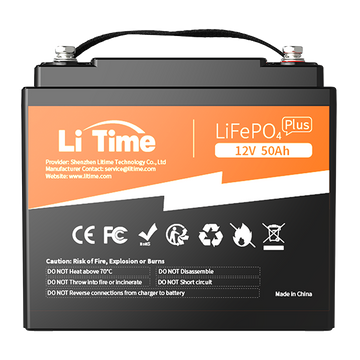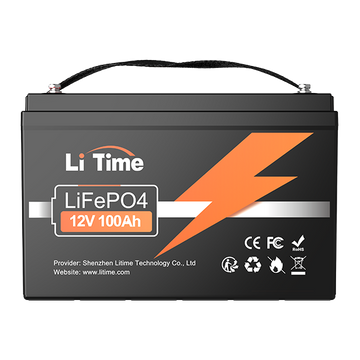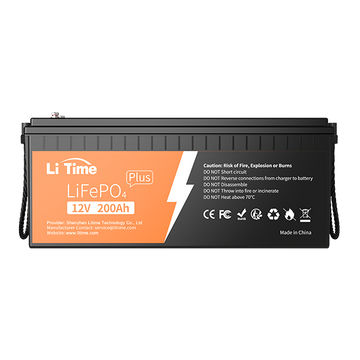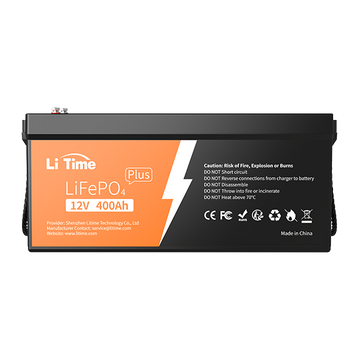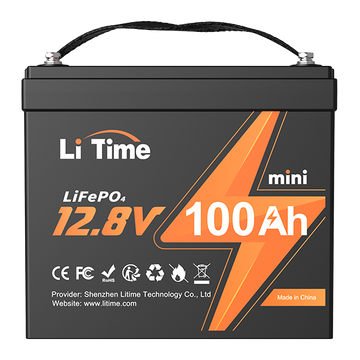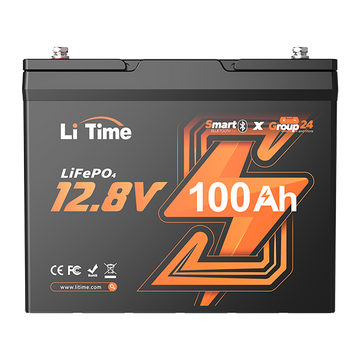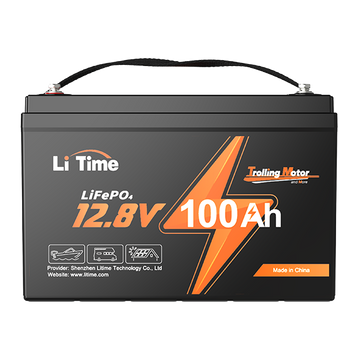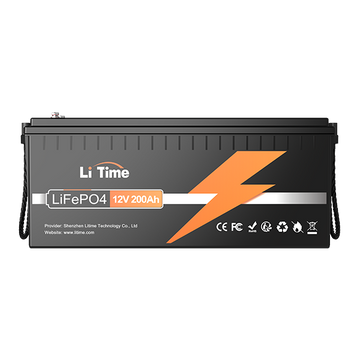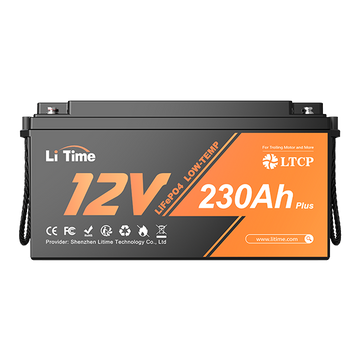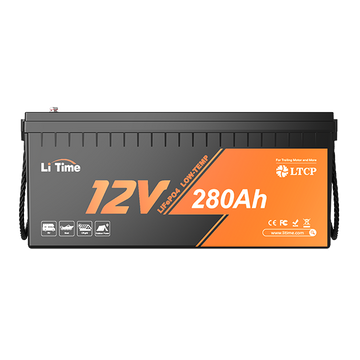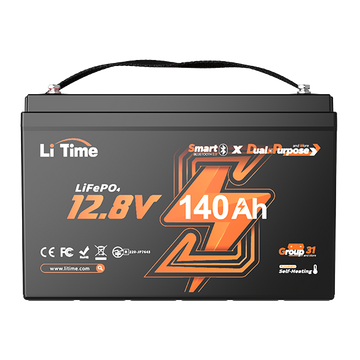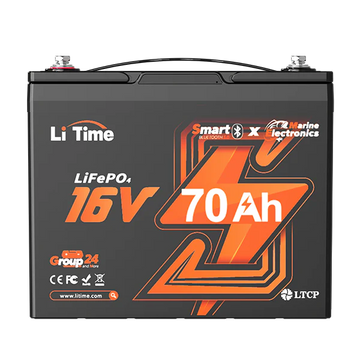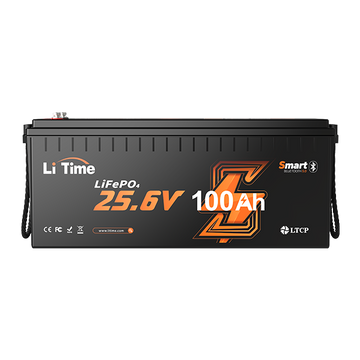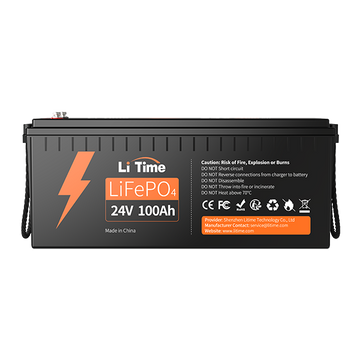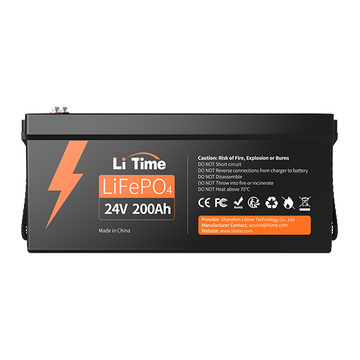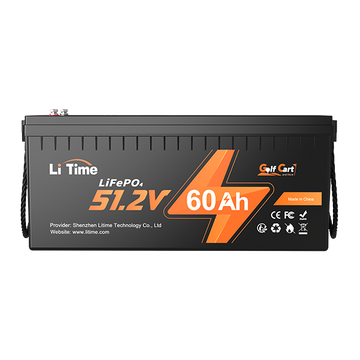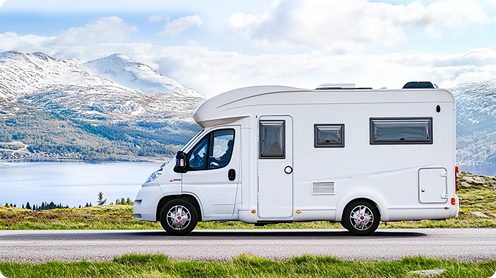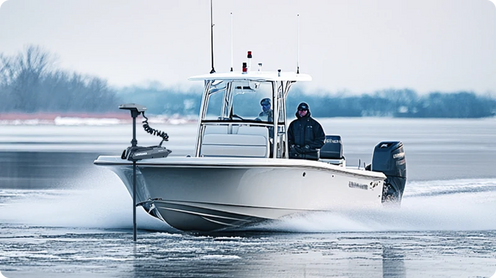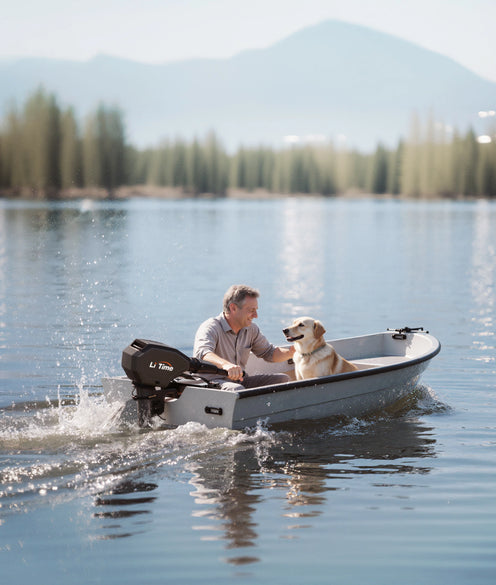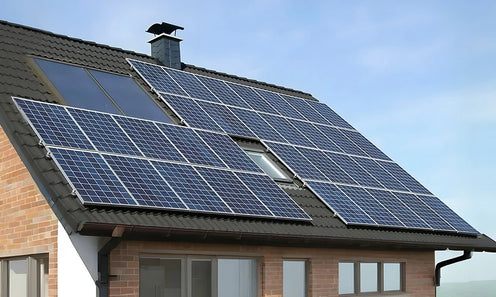Deep cycle batteries are an essential power solution for RVs, boats, solar energy storage, and other off-grid scenarios. Unlike starter batteries used in vehicles, deep cycle batteries are designed to discharge steadily over long periods and withstand repeated charge-discharge cycles without significant degradation. This blog will walk you through the fundamentals of deep cycle batteries, including how they work, their types, how to choose one, proper charging methods, and key usage tips.
Table of Content
- what is a deep cycle battery
- Understanding Cycles and Depth of Discharge (DoD)
- Deep Cycle vs. Starter Batteries
- Core Structural Differences in Deep Cycle Batteries
- What Is a Deep Cycle Battery Used For?
- Types of Deep Cycle Batteries
- 1. Flooded Lead-Acid Batteries (FLA)
- 2. AGM Batteries (Absorbent Glass Mat)
- 3. Gel Batteries
- 4. Lithium-Ion Batteries (Especially LiFePO4)
- How Long Does a Deep Cycle Battery Last?
- What Should You Look for in a Deep Cycle Battery?
- Charging Requirements for Deep Cycle Batteries
- Flooded Lead-Acid Batteries Charging Requirements
- AGM (Absorbent Glass Mat) Batteries Charging Requirements
- Gel Batteries Charging Requirements
- Lithium-Ion Batteries (Including LiFePO4) Charging Requirements
- General Charging Recommendations
- Maintenance and Usage Tips for Deep Cycle Batteries
- Conclusion
what is a deep cycle battery
Before diving into deep cycle battery technology, it's important to understand two foundational terms: Cycle and Depth of Discharge (DoD).
Understanding Cycles and Depth of Discharge (DoD)
A battery cycle refers to one full discharge and recharge process—starting from a fully charged state, discharging to a certain level, and then recharging to full.
DoD is the percentage of the battery's capacity that has been used in one cycle. For instance, if a battery discharges 50% of its total capacity, the DoD is 50%.
DoD is inversely related to State of Charge (SoC). A 100% DoD means the battery is fully discharged, with SoC at 0%. Understanding these terms is crucial for evaluating battery life and using them effectively.
Deep Cycle vs. Starter Batteries
Deep cycle batteries are engineered to deliver a steady amount of current over a long period and tolerate deep, frequent discharges. They're ideal for powering appliances such as refrigerators, water pumps, lighting systems, or off-grid energy setups.
On the other hand, starter batteries (like SLI batteries) are designed to provide a quick burst of high current to start engines. These batteries typically discharge only 2–5% of their capacity and are quickly recharged by the vehicle's alternator.

Using a starter battery in a deep cycle application can be inefficient and damaging. Frequent deep discharges can shorten its lifespan or cause permanent failure.
Core Structural Differences in Deep Cycle Batteries
From a structural perspective, deep cycle batteries are engineered with thicker plates to withstand the physical stress and chemical strain caused by repeated deep discharges.
Additionally, their internal grid structure is optimized to enhance current conductivity. These grids are paired with high-density active materials, which help extend the battery’s overall cycle life.
Different types of deep cycle batteries—such as AGM, flooded lead-acid, and gel batteries—also vary in materials and manufacturing techniques. For instance, the positive grid may incorporate a higher percentage of antimony alloy to boost corrosion resistance and cycling stability. Meanwhile, the separator design focuses on retaining active material, minimizing water loss, and improving efficiency and lifespan.
What Is a Deep Cycle Battery Used For?
A deep cycle battery is a rechargeable battery built for high-discharge, high-cycle use. These batteries can handle 50%–80% DoD and be charged and discharged repeatedly without a significant drop in performance.
Manufacturers typically recommend keeping discharges around or below 45% to optimize battery life.
Common applications include:
- RV and marine systems
- Solar energy storage
- Uninterruptible Power Supplies (UPS)
- Portable power stations
Compared to starter batteries, deep cycle batteries are more robust and reliable in continuous load environments, making them a great choice for off-grid power needs.
Types of Deep Cycle Batteries
Deep cycle batteries come in several varieties, each suited to different needs and budgets. Here's a look at the most common types:
1. Flooded Lead-Acid Batteries (FLA)
Flooded lead-acid batteries are the most traditional form of deep cycle batteries. They consist of lead plates fully submerged in a liquid electrolyte—a mix of sulfuric acid and water—which generates electricity through a chemical reaction. These batteries are widely used in electric vehicles, basic solar setups, and backup UPS systems due to their mature technology and relatively low cost.
However, they do require regular maintenance, including topping off distilled water and cleaning any acid residue on terminals. They must be installed upright to prevent electrolyte leakage, making them less ideal for users needing a maintenance-free or high-vibration solution.
Flooded batteries use thicker plates to withstand the expansion and contraction caused by deep discharges. Compared to starter batteries with thinner plates, these thick plates better resist degradation, extending the overall cycle life.
2. AGM Batteries (Absorbent Glass Mat)
AGM batteries are sealed lead-acid batteries that feature glass fiber mats between the plates to absorb and immobilize the electrolyte. This design prevents leakage, improves ion distribution, and allows the battery to be safely installed in vertical or tilted positions. It also boosts vibration resistance and enhances electrolyte efficiency.
AGM batteries typically use thick plates and dense active material, giving them excellent deep cycle performance. Unlike flooded batteries, AGMs are maintenance-free and do not require water refills, making them ideal for RVs, boats, and mobile energy storage in mid- to high-end applications.
Keep in mind that AGM batteries are sensitive to charging voltages. Overcharging or undercharging can reduce their lifespan, so it’s best to pair them with a smart charger that supports AGM-specific voltage settings.
3. Gel Batteries
Gel batteries are another type of sealed lead-acid battery, but instead of liquid electrolyte, the solution is thickened into a gel-like substance using silica. This gel prevents leakage and maintains excellent ionic conductivity while improving heat distribution and gas recombination—making gel batteries extremely stable in high-temperature or high-load conditions.
Compared to AGM batteries, gel batteries offer superior performance in deep discharge and hot environments, making them a great fit for solar energy storage, telecom systems, and medical equipment where power consistency is critical.
However, gel batteries are even more sensitive to charging voltages than AGM. Using the wrong charger can lead to gel breakdown and internal damage, so always use a gel-compatible charger that matches the recommended voltage curve.
4. Lithium-Ion Batteries (Especially LiFePO4)
Lithium-ion batteries—particularly Lithium Iron Phosphate (LiFePO₄)—are currently the most advanced deep cycle technology on the market. Designed for long-term, stable power delivery, they support high Depth of Discharge (80%–100%) and boast extremely long cycle life, often 3,000–5,000+ cycles.
Unlike lead-acid types, lithium batteries are made up of multiple cells connected in series and parallel, managed by a built-in Battery Management System (BMS). The BMS monitors voltage, current, and temperature, providing protection from overcharging, overdischarging, short circuits, and more.
The BMS design can vary significantly between brands, impacting the battery's performance and application range—so be sure to review the technical specs and protection features before purchasing.
Lithium batteries are maintenance-free, lightweight, compact, and offer a high energy density, making them ideal for RVs, portable power stations, off-grid homes, and industrial systems. They come in common voltages like 12V and 24V and offer flexible capacity options to suit a wide range of energy needs.
Example: LiTime 12V 400Ah LiFePO4 Lithium Battery
- Automotive-grade lithium cells
- Built-in 250A BMS for advanced protection
- 5120Wh capacity
- Weighs only 37.5kg
- Supports up to 3200W continuous output
- Expandable up to 81.92kWh (via 4S4P configuration) for home energy storage

This makes it a powerful, safe, and scalable option for RVs, boats, and off-grid systems.
How Long Does a Deep Cycle Battery Last?
When it comes to evaluating the lifespan of a deep cycle battery, the most accurate metric is cycle count, not calendar years. A single cycle refers to one complete charge and discharge process. The total lifespan of a battery is determined by how many of these cycles it can perform before its capacity drops below a usable level—typically around 80% of its original capacity.
Lead-acid deep cycle batteries generally have a lower cycle life. At a full 100% Depth of Discharge (DoD), they can typically endure around 200 cycles. However, if the discharge is limited to 50% DoD or less, their cycle life can improve to 300–500 cycles.
AGM and Gel batteries, as sealed and upgraded versions of lead-acid batteries, offer better stability and durability. With proper care, they can achieve 500–1000 cycles.
In contrast, Lithium Iron Phosphate (LiFePO₄) deep cycle batteries offer exceptionally high cycle performance. Even at higher DoD levels and faster discharge rates (over 0.1C), they maintain consistent output. Most LiFePO₄ batteries are rated for 2000–4000 cycles, with some reaching up to 6000 cycles—more than 10 times the lifespan of lead-acid batteries. This translates to a usable life of 8–12 years, depending on usage and conditions.
Another major advantage of lithium batteries is that their capacity remains stable even under high discharge rates, unlike lead-acid batteries which often suffer from performance drops. As a result, even a smaller-capacity lithium battery can outperform a larger-capacity lead-acid battery in most deep cycle applications.
What Should You Look for in a Deep Cycle Battery?
When choosing a deep cycle battery, the first and most important factor to consider is capacity, usually measured in amp-hours (Ah). This tells you how much current the battery can supply over a specific period. For example, a 120Ah battery can deliver 6 amps of current for approximately 20 hours (6A × 20h = 120Ah).
This is often listed as the "20-hour rate," which reflects the battery's capacity when discharged evenly over 20 hours. This standard is more representative of real-world use, especially for low-drain, long-duration devices like lighting systems, portable fridges, or outdoor power stations.
How to Estimate the Right Capacity
To choose the right battery, you need to estimate the total current your devices will draw. For example:
- A 12V LED camp light may consume just 0.8A per hour
- A small portable AC unit may draw 6–8A per hour
If your total expected power usage over 24 hours is around 90Ah, it’s recommended to choose a battery with at least 120Ah of capacity. This ensures you have some energy buffer and helps avoid deep discharges that can reduce battery life.
Other Key Factors to Consider
Besides capacity, here are a few other important specs to look at:
- Rated Voltage (e.g., 12V, 24V): Must match your system or devices.
- Maximum Depth of Discharge (DoD): Determines how much of the battery's capacity you can safely use.
- Cycle Life: Affects how long the battery will last before needing replacement.
- Charging Compatibility: Ensure it works with your charging source, such as solar panels or smart chargers.
Charging Requirements for Deep Cycle Batteries
Proper charging is key to maximizing battery life and performance. Since each type—flooded lead-acid, AGM, gel, and lithium—has unique needs, here’s a quick overview of charging methods:
Flooded Lead-Acid Batteries Charging Requirements
Charging Stages:
Flooded batteries typically follow a three-stage charging process:
- Bulk Stage – The battery is charged at a constant current until it reaches about 70–80% capacity.
- Absorption Stage – The voltage is held steady while the current gradually decreases as the battery nears full charge.
- Float Stage – A lower voltage maintains full charge and prevents overcharging.
Voltage Settings (at ~25°C):
- Bulk: 13.9–14.8V (approx. 2.32–2.47V per cell)
- Absorption: 14.5–15.0V (2.42–2.50V per cell)
- Float: 13.2–13.8V (2.19–2.30V per cell)
Temperature Compensation:
For every 1°C increase, reduce voltage by 0.03V per cell. For every 1°C drop, increase it by the same amount.
Maintenance Tips:
- Regularly check electrolyte levels and top off with distilled water.
- Ensure good ventilation to safely disperse gases during charging.
AGM (Absorbent Glass Mat) Batteries Charging Requirements
Charging Characteristics:
AGM batteries follow a similar charge curve as flooded types but with slightly different voltage settings due to their sealed design.
Voltage Settings (at 25°C):
- Bulk: 13.9–14.8V
- Absorption: 14.1–14.8V
- Float: 13.5–13.8V
Temperature Compensation:
Same as flooded batteries.
Maintenance Tips:
AGM batteries are maintenance-free, but they are more sensitive to overcharging. Always use a smart charger with an AGM mode to protect battery health.
Gel Batteries Charging Requirements
Charging Characteristics:
Gel batteries are more sensitive to high voltage. Excessive voltage can cause bubbles in the gel electrolyte, damaging the internal structure.
Voltage Settings (at 25°C):
- Bulk: 13.9–14.2V
- Absorption: 14.1–14.4V
- Float: 13.5–13.8V
Temperature Compensation:
Apply the same adjustments based on ambient temperature.
Maintenance Tips:
Gel batteries are sealed and maintenance-free, but must be paired with a gel-compatible charger to prevent internal breakdown.
Lithium-Ion Batteries (Including LiFePO4) Charging Requirements
Charging Characteristics:
Lithium batteries generally use a two-stage charging process:
- Constant Current (CC)
- Constant Voltage (CV) (No float stage required.)
Voltage Current Settings:
These depend heavily on the manufacturer's specs. Always follow the provided charging guidelines for safe and optimal performance.
Temperature Requirements:
Lithium batteries should be charged only between 0°C and 45°C. Charging below freezing may lead to lithium plating, a safety hazard.
Maintenance Tips:
No routine maintenance is needed. However, always use a dedicated lithium battery charger with built-in protections.
General Charging Recommendations
Beyond specific battery types, here are some universal charging tips to follow.
- Choose the right battery for the environment. In hot, humid, or high-vibration conditions, AGM or lithium batteries are ideal. Flooded batteries are a more budget-friendly option but require regular maintenance.
- Check charge levels regularly. Batteries left unused can self-discharge or sulfate. Check voltage monthly and keep them in a healthy charge range.
- Don’t overfill maintainable batteries. Too much electrolyte can lead to leaks or corrosion during charging due to gas expansion.
- Avoid full discharge. For lead-acid batteries, try to keep the state of charge above 50% to prolong cycle life.
- Match charging settings to battery type. Each battery type (AGM, Gel, LiFePO₄) has specific voltage and current requirements. Incorrect settings can reduce performance or cause damage.
- Don’t mix new and old batteries. Mixing batteries in different conditions can cause imbalance, leading to overcharge, undercharge, and reduced lifespan for the entire bank.
- Secure all connections. Check terminals for looseness or corrosion. Tight, clean connections prevent voltage drop and overheating, ensuring safe operation.
Maintenance and Usage Tips for Deep Cycle Batteries
To extend the lifespan of your deep cycle battery and ensure stable performance in various environments, regular inspection and proper usage are essential. Below is a set of simple, safe, and practical tips suitable for most deep cycle battery users.
Basic Inspection Checklist
- Electrolyte Check (for flooded lead-acid batteries): Regularly check fluid levels and top off with distilled water if needed. Never use tap water or overfill the cells.
- Voltage Check: Use a digital multimeter to measure terminal voltage. If a 12V battery reads below 12.0V at rest, it's nearing deep discharge and should be recharged promptly.
- Load Test: Use a load tester to check voltage stability under load and assess remaining capacity.
- Visual Inspection: Look for swelling, leaks, corrosion, or cracks. Replace immediately if physical damage is found.
Everyday Usage Tips for Deep Cycle Batteries
- Choose the right battery for your environment: Use AGM or lithium batteries in hot, humid, or high-vibration settings. Flooded batteries are more economical but require regular upkeep.
- Monitor charge status regularly: Idle batteries can self-discharge or sulfate. Check voltage monthly to keep the battery in a healthy state of charge.
- Don’t overfill maintainable batteries: Too much electrolyte may cause leaks or corrosion during charging due to gas expansion.
- Avoid discharging to 0%: Keep lead-acid batteries above 50% charge whenever possible to preserve cycle life.
- Match charger settings to battery type: AGM, Gel, and LiFePO₄ batteries require different voltage and current levels. Incorrect settings can cause damage.
- Don’t mix new and old batteries in a bank: Mixing batteries of different ages causes imbalance and reduces the life of the entire battery bank.
- Secure all wiring connections: Make sure terminals are tight and corrosion-free to avoid voltage drop and overheating.
Conclusion
The right deep cycle battery, used and maintained properly, ensures reliable power and long-lasting performance. Use this guide to choose wisely and get the most from your system.
